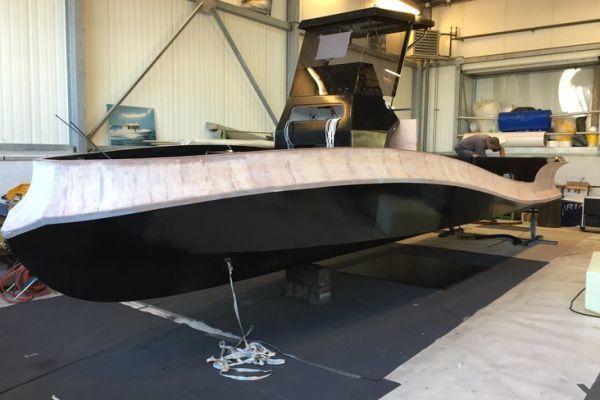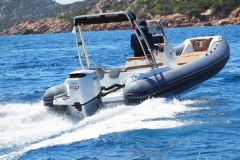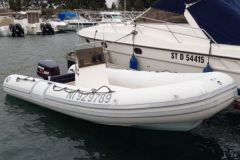A wealth of expertise in float refurbishment
Simon Marette has been at the head of North Boat, a company specializing in float gluing, since 2013. After 6 years as a technician specializing in life rafts, he is transferring his experience to RIBs, whose manufacturing, gluing and process techniques are similar.
Based in Le Havre, the company has developed extensive expertise in RIB repair, as its founder explains: "Our core expertise is RIB repair. We handle gluing, stripping, tearing, heat welding, painting and even complete replacement of floats. We manufacture our floats to order. The tubes are made in the factory and we take care of the assembly part."
The company works with both PVC and hypalon, and also carries out repairs to resin as part of an overall project. Its services are aimed at both professional and private customers.
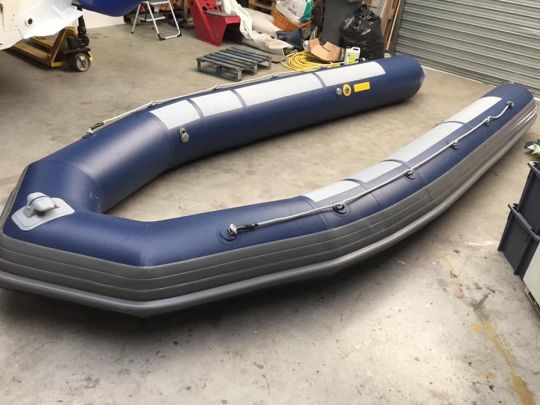
Extending the life of polyester hulls
Simon Marette explains how the project came about: "A polyester hull has a lifespan of at least 40 years, which is not the case for floats. We give the RIB a new lease of life by providing all the solutions that concern the floats as long as the hull is in good condition. The most important requests concern the boat's aesthetics and buoyancy. The most represented activity is gluing, in the event of disbonds or punctures. We're also seeing an increasing number of requests for complete replacements. This is linked to several factors. When a RIB meets an owner's criteria and he can't find another model to replace it, he doesn't hesitate to change his floats to keep his boat. When a float is still good structurally, but not aesthetically, it can be worth repainting them."
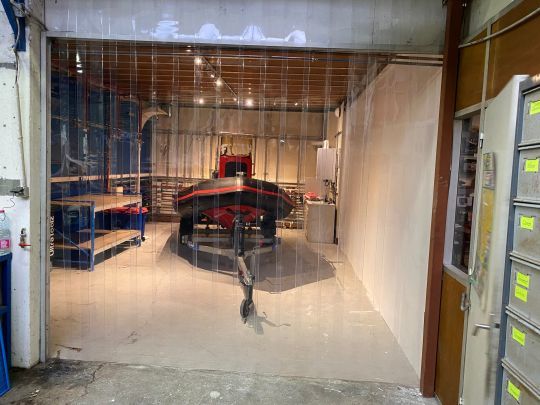
Rigorous installation techniques
The paint used by North Boat is Neop15, a process that produces a flexible paint that clings to the substrate, whether PVC or hypalon. As for the glue, it's a two-component glue that's "rather capricious", and requires a rigorous process, as Simon Marette explains: "Gluing is a special job. There are gluing constraints to be respected. We have two gluing ovens that enable us to regulate temperature and humidity to avoid excessive differences that would prevent the glue from setting. We proceed with double gluing. The first coat is left to impregnate and bond to the substrate, before a second coat is applied. Setting time varies according to temperature. The fabric is then glued on schedule. Like a bodybuilder, preparation always takes longer than the final work. There's a lot of preparation involved in a proper bond. In the case of a large tear, a piece is inserted inside the floats and left to glue for 24 to 48 hours, before the outer patch is applied. The fabric then has to be stretched, sometimes into complex shapes, rounded out by pulling... There's a whole host of techniques to learn."
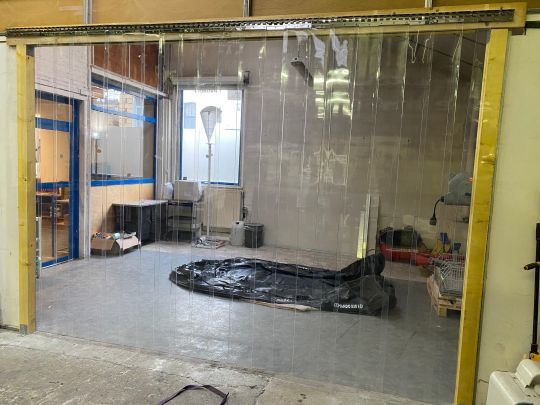
Storage and winterization, essential for preserving your boat
Today, boat owners are beginning to realize that it is possible to replace their floats to extend the life of their boats. For example, a PVC float that has been left in port for a long time, or stored outdoors where it is not protected from UV rays, will cook and disintegrate. As the professional points out, UV rays come not only from the sun, but also from the moon. As a result, the majority of repairs are carried out on boats that have not been properly stored over the winter, leading to delamination or damage while sailing. Beware, too, of hot weather, which tends to accelerate the wear and tear of adhesives at the end of their life.
Simon Marette alerts : "It's important to make people aware of float repairs. It can be tempting to buy a pot of glue and a piece of fabric and try to repair it yourself, but it's a risk to work with thin, fragile fabric. You can't add material. If it's been over-refined or over-prepared, this can prevent us from intervening. In any case, you mustn't neglect your float: it manages the boat's buoyancy, and if it comes unstuck, it can be dangerous. As an example, for a 6 m PVC semi-rigid, a complete change of floats costs 7,500 euros, which corresponds to around 1/3 of the price of a new hull."
A meticulous craft
The professional is currently looking to expand in order to pass on the technique and train an employee and apprentices. He concludes: "We have to find people who are comfortable in conditions that are not the easiest. We're working in the presence of solvents and glue. You also need to be patient and meticulous. It's a job somewhere between bodywork and covering."
